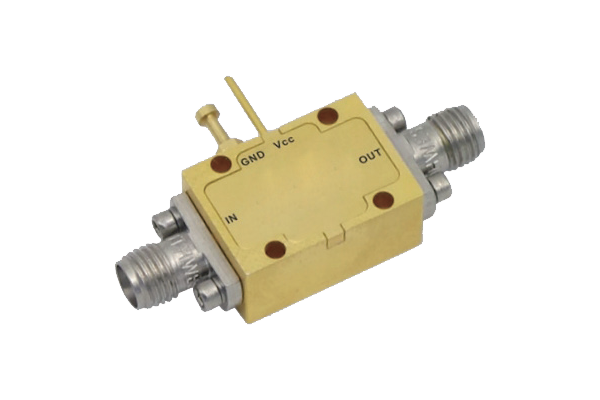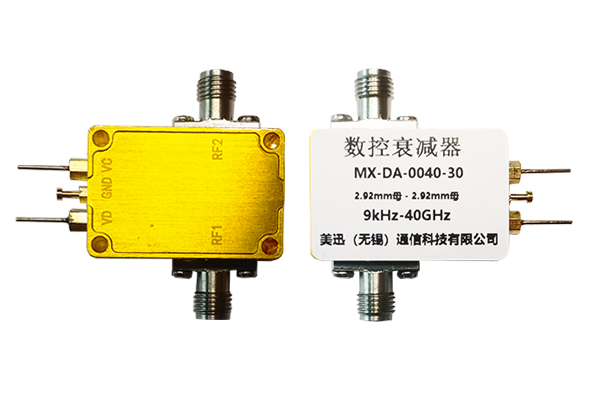
Pin diode components are considered indispensable in advanced RF applications because of their core operational properties Their ability to operate with fast state changes and low capacitance while maintaining minimal insertion loss fits them to switching modulation and attenuation tasks. The core switching mechanism for PIN diodes is based on bias-driven control of current across the junction. The applied voltage modifies the depletion layer thickness at the p–n interface thus affecting conductivity. Modifying the applied bias permits PIN diodes to function at high frequencies with minimal signal distortion
For applications demanding exact timing and control PIN diodes are typically incorporated into complex circuitry They are useful in RF filtering systems for choosing which frequency bands to pass or suppress. Additionally their ability to handle elevated power levels makes them fit for amplifier power divider and generator circuits. The push for compact efficient PIN diodes has led to broader use in wireless communications and radar systems
Analyzing the Performance of Coaxial Switch Designs
Developing coaxial switches is complicated and depends on careful analysis of key parameters A switch’s performance is determined by its type frequency range and how well insertion loss is controlled. Minimizing insertion loss and enhancing isolation are primary goals for coaxial switch engineering
Analyzing performance involves measuring important parameters like return loss insertion loss and port isolation. Performance figures are derived from simulation modeling theoretical analysis and empirical testing. Rigorous performance analysis is necessary to secure dependable coaxial switch operation
- Analytical methods simulation packages and experimental testing are standard approaches to coaxial switch analysis
- Environmental temperature impedance mismatches and production tolerances can significantly influence switch characteristics
- New advances trends and innovations in coaxial switch engineering aim to enhance performance metrics while cutting size and power consumption
Optimizing LNA Designs for Performance
Improving LNA performance efficiency and gain is key to maintaining high signal fidelity across applications That involves meticulous transistor choice biasing arrangements and topology selection. Sound LNA architectures control noise contributions and support strong low-distortion amplification. Simulation and modeling techniques are essential for analyzing the noise consequences of design options. The goal is to minimize Noise Figure, reflecting the amplifier’s proficiency in maintaining signal relative to added noise
- Prioritizing low-noise transistors is crucial for optimal LNA performance
- Correctly applied bias conditions that are optimal and suitable are vital for low noise
- Circuit topology choices are decisive for the resulting noise performance
Approaches such as matching networks noise suppression and feedback loops help improve LNA behavior
Signal Switching Using Pin Diodes

PIN diode based routing offers versatile efficient control of RF signal paths These semiconductors can be rapidly switched on or off allowing dynamic path control. Low insertion loss combined with excellent isolation is a primary advantage that reduces signal degradation. Common uses encompass antenna selection duplexers and phased array implementations
The switching behavior is governed by voltage driven modulation of the diode’s resistance. When off or deactivated the diode exhibits high resistance effectively blocking RF energy. When a positive control voltage is applied the diode resistance decreases reduces or falls allowing RF signals to pass
- Additionally PIN diode switches present fast switching low energy use and compact dimensions
Multiple configurable architectures and design schemes of PIN diode switches facilitate complex routing operations. Strategic interconnection of many switches yields configurable switching matrices for versatile path routing
Measuring the Performance of Coaxial Microwave Switches

Testing and assessment of coaxial microwave switches are crucial to ensure efficient operation within systems. Various performance drivers like insertion reflection transmission loss isolation switching speed and bandwidth influence switch behavior. Complete evaluation comprises quantifying these parameters across different operating environmental and test conditions
- Additionally the assessment should examine reliability robustness durability and the ability to endure severe environmental conditions
- Ultimately findings from a thorough evaluation yield critical valuable essential insights and data for selecting designing and optimizing switches for targeted uses
Comprehensive Review on Reducing Noise in LNA Circuits
Low noise amplifiers are fundamental in wireless RF systems as they amplify weak signals and reduce noise contributions. The review provides a comprehensive examination analysis and overview of noise reduction techniques for LNAs. We explore investigate and discuss primary noise sources such as thermal shot and flicker noise. We further consider noise matching feedback solutions and biasing best practices to lessen noise. The review emphasizes recent innovations including novel materials and architecture approaches that decrease noise figures. With a complete overview of noise minimization principles and methods the review supports the design of high performance RF systems by researchers and engineers
High Speed Switching Applications for PIN Diodes

They exhibit unique remarkable and exceptional features that render them ideal for high speed switching Their small capacitance and low resistance facilitate high speed switching suitable for accurate timing control. Moreover PIN diodes exhibit linear proportional responses to applied voltage enabling precise amplitude modulation and switching control. This flexible adaptable versatile behavior makes PIN diodes suitable applicable and appropriate for varied high speed roles Common applications encompass optical communications microwave circuits and signal processing hardware and devices
IC Coaxial Switch and Circuit Switching Advances
Integrated circuit coaxial switch technology marks a significant advancement in signal routing processing and handling within electronic systems circuits and devices. These ICs control manage and direct coaxial signal flow providing high frequency capability with low latency propagation and insertion timing. Miniaturization through IC integration results in compact efficient reliable and robust designs fit for dense interfacing integration and connectivity scenarios
- Through careful meticulous and rigorous application of such methods engineers can design LNAs with top tier noise performance enabling dependable sensitive systems By rigorously meticulously and carefully implementing these techniques practitioners can achieve LNAs with remarkable noise performance for sensitive reliable electronics With careful meticulous and rigorous execution of these strategies designers can obtain LNAs exhibiting excellent noise performance for sensitive reliable systems Through careful meticulous and rigorous implementation of these approaches engineers can achieve LNAs with exceptional noise performance supporting sensitive reliable systems
- Deployment areas span telecommunications data communications and wireless networking environments
- Coaxial switch IC implementations support aerospace defense and industrial automation applications
- Consumer electronics audio visual equipment and test and measurement systems are typical domains
Considerations for LNA Design at Millimeter Wave Frequencies

Designing for mmWave requires accounting for high attenuation and pronounced noise effects. Parasitic effects are dominant at mmWave thus careful layout techniques and component choices are crucial. Minimizing mismatch while maximizing gain is critical essential and important for mmWave LNA operation. Devices such as HEMTs GaAs MESFETs and InP HBTs are important selections to meet low noise figure goals at mmWave. Furthermore the design and optimization of matching networks is crucial to securing efficient power transfer and impedance match. Accounting for package parasitics is important since they can significantly affect LNA performance at mmWave. The use of low-loss lines and careful ground plane planning is essential necessary and important to limit reflections and sustain bandwidth
Characterization Modeling Approaches for PIN Diodes in RF Switching
PIN diodes perform as significant components elements and parts across various RF switching applications. Exact detailed and accurate characterization of these devices is essential for the design development and optimization of reliable high performance circuits. That entails analyzing evaluating and examining electrical voltage and current characteristics such as resistance impedance and conductance. Frequency response bandwidth tuning traits and switching speed latency response time are part of the characterization
Furthermore developing precise models simulations and representations for PIN diodes is crucial essential and vital to forecast performance in complex RF systems. A range of modeling approaches including lumped element distributed element and SPICE models are used. The choice of model simulation or representation hinges on the specific application requirements and the desired required expected accuracy
Sophisticated Advanced Methods for Minimal Noise Amplifiers
low-noise amplifierDeveloping LNAs involves diligent consideration of circuit topology and components to obtain optimal noise performance. Emerging novel semiconductor developments have allowed innovative groundbreaking sophisticated design strategies that cut noise considerably.
Notable techniques include employing utilizing and implementing wideband matching networks incorporating low-noise transistors with high intrinsic gain and optimizing biasing schemes strategies and approaches. Moreover advanced packaging techniques and effective thermal management significantly contribute to reducing external noise sources. With careful meticulous and rigorous execution of these strategies designers can obtain LNAs exhibiting excellent noise performance for sensitive reliable systems
